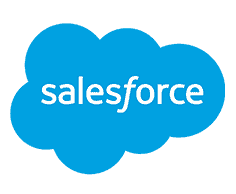Customer care, customer satisfaction, customer churn, and now customer retention. It won’t be the first or the last time these specific terms, often accompanied by “Customer,” are mentioned. Living in what is referred to as the “era of the customer,” it’s natural for many terms to directly reference the customer and the pivotal role they now play in the market.
The customer is the driving force behind a strategy that could not exist without placing their expectations, needs, and requirements at the center. Today, we will specifically address the importance of customer retention and why it serves as the key to achieving successful upselling or cross-selling.
What is meant by customer retention?
Let’s start with a precise definition and then analyze it further. Customer Retention refers to the set of activities undertaken by a company to retain its customers over time, minimizing defections as much as possible. It thus represents the maintenance of ongoing, long-term exchange relationships with them.

To build such strong relationships, a company uses various marketing and promotional tools, but above all, a CRM to store all the information needed to create content aimed at customer loyalty and satisfaction. A satisfied customer, after all, is more likely to make repeat purchases.
But what attracts the customer? What might interest them? A tailored study of the customer, their business, and their specific needs will undoubtedly make a difference in the long run. Whether it’s an additional service, an updated version of a previously purchased product, or perhaps something entirely new, CRM proves to be the winning tool as it enables a company to understand:
- Which customers to invest time and resources in.
- What is the best communication channel to contact them.
- What they might be interested in.
What tools does CRM offer to increase retention?

To keep the Customer Retention Rate, which is the percentage value of loyal customers, high, CRM is the best solution for building strong relationships. This is because:
- All data is located on a single platform, easily accessible and visible to those who need it. The more extensive and detailed the information, the stronger the CRM strategy will be.
- It allows you to identify the most profitable customers, those contacted most recently, and those who haven’t been contacted for a long time.
- It enables you to personalize customer relationships by sending tailored emails and making bespoke offers, ensuring customers feel they are interacting with a human customer service and not a cold bot.
- It improves Customer Service by allowing you to stay closer to the customer in case they encounter issues with the product. Ergo: a customer who feels abandoned can never be satisfied—a fundamental yet unwritten rule that emphasizes the importance of finding ways and practices to manage the customer relationship as effectively as possible.
Conclusions
In one of our previous articles, we discussed strong up-selling and cross-selling strategies to boost e-commerce sales, but not only that. Talking about Customer Retention today also means highlighting the best way to implement up-selling and cross-selling strategies. How?

Thanks to the strategy implemented, discussing up-selling and cross-selling today means increasing the likelihood that the customer will remain loyal to the brand. Experiencing a journey that allows them to benefit from their chosen product while discovering what the product and its related offerings can provide is priceless—or rather, the value is so high that customer satisfaction becomes instantly contagious. They can’t help but share with those around them the benefits they’ve gained from choosing their “favorite product/service.”
Customer centricity today means focusing on experience, quality, and the expectations that anyone approaching a particular brand holds. As for everything else, the only story that matters is the one the customer chooses to share about their trust and reliance on the brand.










